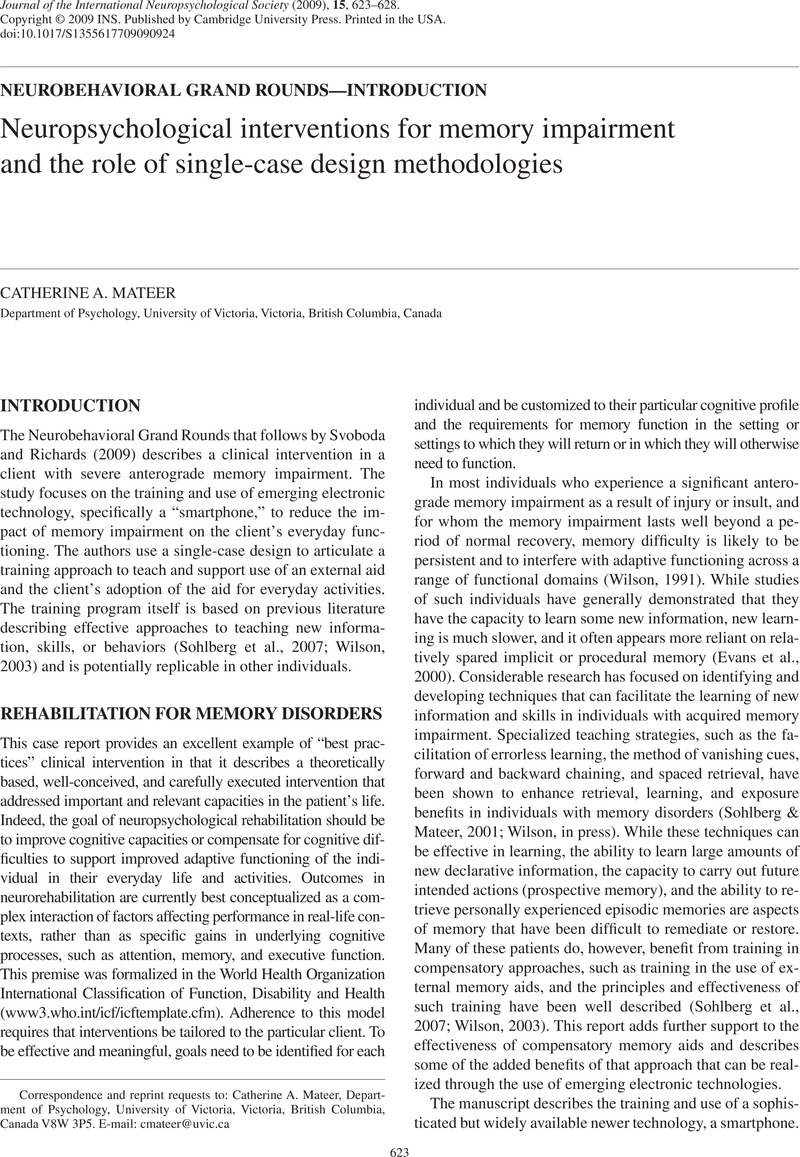Crossref Citations
This article has been cited by the following publications. This list is generated based on data provided by Crossref.
Merbitz, Nancy Hansen
Merbitz, Charles T.
and
Ripsch, Judy P.
2012.
The Oxford Handbook of Rehabilitation Psychology.
p.
96.
Loschiavo-Alvares, Fabricia
Sediyama, Cristina
Neves, Fernando
Corrêa, Humberto
Malloy-Diniz, Leandro
and
Bateman, Andrew
2013.
Neuropsychological rehabilitation for bipolar disorder — A single case design.
Translational Neuroscience,
Vol. 4,
Issue. 1,
Small, Jeff A
and
Cochrane, Diana
2020.
<p>Spaced Retrieval and Episodic Memory Training in Alzheimer’s Disease</p>.
Clinical Interventions in Aging,
Vol. Volume 15,
Issue. ,
p.
519.
Salis, Christos
Murray, Laura
and
Vonk, Jet M. J.
2021.
Systematic review of subjective memory measures to inform assessing memory limitations after stroke and stroke-related aphasia.
Disability and Rehabilitation,
Vol. 43,
Issue. 11,
p.
1488.



